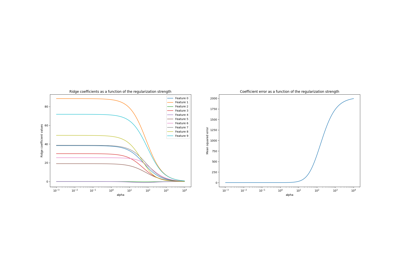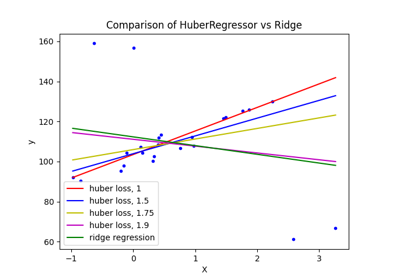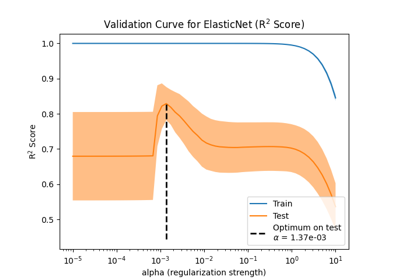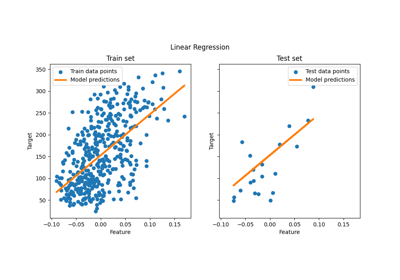备注
Go to the end 下载完整的示例代码。或者通过浏览器中的MysterLite或Binder运行此示例
绘制岭系数作为正规化的函数#
显示估计量系数中共线性的影响。
Ridge 回归是本例中使用的估计量。每种颜色代表系数载体的不同特征,并且这显示为规则化参数的函数。
这个例子还展示了将岭回归应用于高度病态矩阵的有用性。对于此类矩阵,目标变量的轻微变化可能会导致计算权重的巨大差异。在这种情况下,设置一定的正规化(Alpha)以减少这种变化(噪音)是有用的。
当Alpha非常大时,规则化效应主导平方损失函数,并且系数趋于零。在路径的尽头,随着阿尔法趋于零,解趋于普通最小平方,系数就会表现出很大的波动。在实践中,有必要以保持两者之间的平衡的方式调整Alpha。
# Authors: The scikit-learn developers
# SPDX-License-Identifier: BSD-3-Clause
import matplotlib.pyplot as plt
import numpy as np
from sklearn import linear_model
# X is the 10x10 Hilbert matrix
X = 1.0 / (np.arange(1, 11) + np.arange(0, 10)[:, np.newaxis])
y = np.ones(10)
计算路径#
n_alphas = 200
alphas = np.logspace(-10, -2, n_alphas)
coefs = []
for a in alphas:
ridge = linear_model.Ridge(alpha=a, fit_intercept=False)
ridge.fit(X, y)
coefs.append(ridge.coef_)
显示结果#
ax = plt.gca()
ax.plot(alphas, coefs)
ax.set_xscale("log")
ax.set_xlim(ax.get_xlim()[::-1]) # reverse axis
plt.xlabel("alpha")
plt.ylabel("weights")
plt.title("Ridge coefficients as a function of the regularization")
plt.axis("tight")
plt.show()
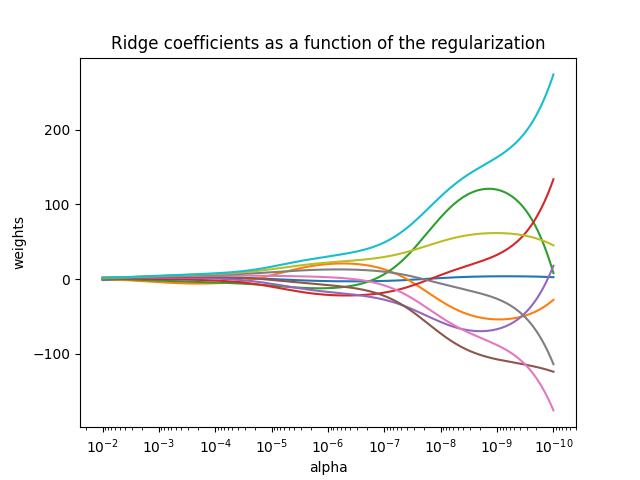
Total running time of the script: (0分0.252秒)
相关实例
Gallery generated by Sphinx-Gallery <https://sphinx-gallery.github.io> _

